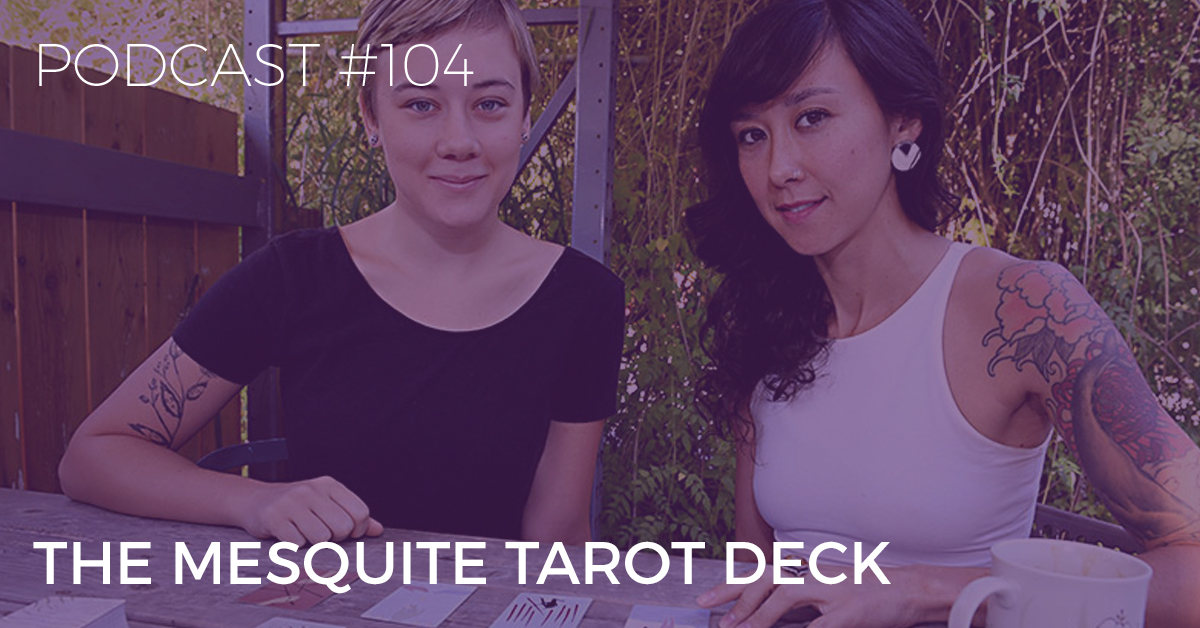
Today we're talking with Alicia and Bronwyn, creators of the Mesquite Tarot deck. As you know, there are a lot of Tarot decks out there, but this deck is one that will likely be near the top of your wish list. The Mesquite Tarot cards are beautiful, with a soft and subtle energy about them and have a very fresh and light look.
In this episode, we'll be chatting about the journey and meaning of Mesquite Tarot along with getting to know Alicia and Bronwyn a little more.
Additional Resources
- www.mesquitetarot.com
PODCAST TRANSCRIPTION
WELCOME
You’re listening to the Biddy Tarot Podcast, and this is Episode 104: The Mesquite Tarot
Welcome to the Biddy Tarot Podcast, where you'll learn how to connect more deeply with your intuition and live an empowered and enlightened life with the Tarot cards as your guide.
Listen as Brigit and her guests share their very best tips and strategies to help you read Tarot with confidence. Now, here is your host, Brigit Esselmont.
INTRODUCTION
BRIGIT: Hello and welcome back to the Biddy Tarot Podcast. As always, I’m super excited to be talking with you about Tarot. Today, I’m welcoming not just one guest but two guests. These beautiful ladies, Alicia and Bronwyn, are the creators of the Mesquite Tarot deck.
Now, there are a lot of different Tarot decks out there, but this one caught my eye because it has a beautiful, new, fresh, modern look, and it’s beautifully simple. In fact, you’ll hear today about how the inspiration around the illustrations was very much about “Let’s find the one or two symbols in the traditional Tarot and really draw them out, so that becomes the sole focus of the card.”
I think what’s also equally fabulous about this deck is not just the deck itself but the process which Alicia and Bronwyn used to really bring this deck to life. In fact, when they launched it on Kickstarter just a few months ago, they
were able to exceed their goal by 200%, which is amazing! Even within just a few months of the first run of publishing, they are already starting to get ready for the second run. This is a hugely successful, self-published Tarot deck.
Well, let’s just hear more about it! I think you're going to love today. It’s a super cruise-y, happy interview, so without much further ado, let me welcome Alicia and Bronwyn.
MESQUITE TAROT
BRIGIT: Welcome, Alicia and Bronwyn. I’m so excited to have you here. How are you both going?
ALICIA: Great! Thank you so much for having us.
BRONWYN: We’re doing awesome. Thanks for having us on the podcast.
BRIGIT: Wonderful. And I know it’s a bit late for you, and you're sipping on your tea, so thanks for staying up late. I appreciate it. We’re going to talk a lot about the Mesquite Tarot and your inspirations for the deck, but I first want to start with your journey with Tarot and how you came about Tarot in the first place.
ALICIA: Yeah, absolutely. Bronwyn and I are both practitioners of yoga and meditation, and I think we both had brief introductions to Tarot, but we began using it as a tool for self-reflection and contemplation, and just a space to have some silence in the mornings.
BRONWYN: Yeah. Alicia actually introduced me to Tarot when she moved into the house. We live in this really beautiful four-bedroom house in Austin, Texas. We just started practicing Tarot in the mornings. She started kind of casually reading my cards, and then I got a deck of my own. We started studying together over coffee.
BRONWYN: Yeah, eventually started building up our collections of books and cards and getting a little bit deeper in, and then this project just kind of happened to us.
BRIGIT: Yeah. Tell me about what was the conception of Mesquite Tarot. Where was the inspiration? How did it start?
ALICIA: I guess the seed of Mesquite sort of began with our coffee readings in our little nook. We would draw cards and talk about what was happening in our lives and how we were seeing that play out in the Tarot.
Then Bronwyn being an illustrator and me being a writer, we were noticing how a lot of the archetypes and symbols and images were showing up in our respective trades. We started talking about that, and we were joking around. We were like, “We should just make a Tarot deck!” Eventually, we started taking that a little more seriously.
BRONWYN: Yeah, we just kind of started. I was drawing lots of images, and I would show them to Alicia and give her little drawings and stuff. We would be talking about the cards, and we kind of got to this point where some of the stuff that was coming out of us was really special, and we recognized that, and we thought, “This is something that needs to happen. This is calling to us, and we should see this through and make it real.”
BRIGIT: Yep. Wonderful. What’s been your process, say, from the illustration side of things? Having seen your video on Kickstarter, I’ve sort of got an idea of the inspiration there, but it’s like you're pulling out the core symbol from the traditional Tarot and then creating it in a new, revised way. Tell me a little bit more about that.
BRONWYN: Yeah. I think the process overall was very intuitive for me. When I first started practicing Tarot, I found a lot of the traditional… Like I said, I’m sort of a beginner to the practice, so I found a lot of the traditional cards kind of overwhelming. Even in studying them and reading a lot of the material that’s written about the Rider-Waite-Smith deck and some of the other traditional decks, the Marseilles and such, I found it pretty overwhelming, and I thought, “Man, I wish there was something that I could practice with that felt a little bit more accessible.”
I noticed that that was kind of missing. I mean, there are a few other indie decks out there that I really like and that are doing really cool things, but I thought there was a voice that was lacking in the Tarot world.
It started with intuitive sketching and then a lot of study. After the initial idea, we kind of took a break from any kind of creative production and just did a lot of self-work, a lot of study and a lot of building relationships with the cards, and then we kind of got down to business with the production side of things.
I tried to step out of the way as much as I could and kind of let what first popped into my head just come through.
FINDING THE RIGHT CARDS
BRIGIT: Yep. Did you find that any particular cards challenged in a certain way or took a life of their own?
BRONWYN: Totally. We were just talking about this, actually, a few minutes ago. One of the cards that I had the most trouble with was the Chariot, and it’s also one of the cards that I think deviates the most from the traditional image in our deck. If you haven’t seen it, it’s sort of a femme-type figure flying through the air, with the wind blowing through their hair, over a big mountain range. It’s pink and light blue.
Yeah, I struggled with that one a lot. I probably drew that card seven times, totally different iterations of it, and I think what was really lacking was a sense of movement and freedom that I feel like doesn’t come through in a lot of other decks as well. That one was particularly challenging, and I talked about it a lot with everybody. Everybody I saw, I was trying to discuss this theme of what the Chariot really means and how it plays out in your life and how you see it happening to you.
I think what I landed on was good. I like it.
BRIGIT: I guess it’s a funny thing where you can’t really opt out of “Oh, I just don’t like the Chariot. I won’t do that one!” You’re kind of stuck in “I’ve got to do them!”
ALICIA: [inaudible [00:07:50] a few parts.
BRONWYN: Yeah, totally. Well, I think the cards that were the most challenging ended up being the biggest learning process. It was the cards that I had to go the deepest with and really learn the most about and reflect on the most. It was cool to do that with the Chariot, for sure.
BRIGIT: Yep. And did you find yourself doing them in order or more just what felt right at the time?
BRONWYN: I think we both started out doing it a little bit more freeform, kind of letting the cards that we were pulling the most or the cards that we felt the most attracted to…
ALICIA: Part of our study was to do Tarot journals, so we made notebooks with a page or two for each card in the deck, and we would write in each page as we pulled the cards. We started to develop these relationships with the cards and their meanings and how they related to our lives in a really personal way and how they were appearing and reappearing based on situations and based on our emotional states and certain things. I think that was definitely a big part of the beginning process.
But our timeline also was challenging. I think towards the end, we were really having to be very stern and organized and really—
BRONWYN: Yeah, and having that foundation of study at the beginning, I think, really helped because it allowed us to be like, “OK, we’re going to set some more tangible goals for ourselves and work through it now that we have already these really personal relationships with the cards. It’s not an issue to kind of approach it in a more systematic way because that emotional foundation is already there.”
BRIGIT: Yep. I’m curious—it sounds like a beautiful, intuitive process, but did you also have moments where you were just cursing the whole project and thinking, “Why did we do this?”
BRONWYN: Yeah!
ALICIA: I think, creatively, it was a huge labour of love for us, but it was also a really big confrontation with putting ourselves out there in a very public way. The Tarot is such a personal thing for us, and I think a lot of my writing and a lot of Bronwyn’s illustration came from a really deep place and really personal place. It felt really scary. I know we shed a lot of tears together about that. It was a really beautiful, opening process and a space to feel vulnerable and really open with our process.
And imperfect, too, because our creation, Mesquite, is very imperfect, and it’s a voice in a larger conversation of Tarot. It’s by no means the end-all, be-all, perfect creation, but we do think that it’s a special voice, so it feels really good to have it completed.
BRONWYN: Yeah!
BRIGIT: Yeah. I think that’s really interesting, the vulnerability piece. It’s you both being expressed either through the writing or through the illustrations. I’m curious… I can’t remember who it was exactly, but another deck creator had said, “I didn’t want to share the cards with anyone until I had finished the deck because I didn’t want their opinions to shape the way that I was creating and expressing.” So, I’m curious—for you, did you share both the writing and the illustrations as you did it? Or did you hold that secret first?
BRONWYN: I think a healthy balance of both. I think, speaking from my personal experience with the illustrations (and I was talking about this earlier, too, when we were talking about the Chariot), for cards where I was having issues, it was helpful for me to get an objective viewpoint. I showed my partner’s mother the drawing I had done for the Chariot, and she knows nothing about Tarot, and I just asked her, “What does this make you think about? How does this make you feel?” Her feedback was really important. I found that helpful in certain situations.
There were, obviously, other times when I felt like, “No, this is definitely the card. I don’t really need an outside opinion. This is how it should be, and I’m happy with it.”
“HOW DOES THIS MAKE YOU FEEL?”
BRIGIT: Yeah, that’s interesting. And that’s kind of a different question: “How does this make you feel?” versus “Do you like it?”
BRONWYN: Yeah.
BRIGIT: Because it’s a can of worms. “No, I don’t.” “Oh no!” I’m also curious about the writing process. What did that look and feel like for you?
ALICIA: Well, a lot of what I was trying to do with the writing was sort of similar to the illustration in that I wanted it to be really simple and barebones, taking a lot of Tarot knowledge and understanding archetypes and symbols and pairing it down into something really simple and approachable.
I also wanted it to be something that was linear but also writing that could touch people on a level that goes beyond that and that isn’t necessarily too heady or intellectual and can kind of reach on more of a heart level. I tried to make my writing a little bit more on the poetic side of things… Or, I guess, words and phrases that would be felt rather than thought.
BRONWYN: It’s very experiential writing. It’s brings you into a meditative space, I think.
BRIGIT: Yeah.
ALICIA: Yeah. My process was messy and insane and all over the place, but I guess it was a huge growth process for me, for sure, and I’m happy with it.
BRIGIT: Yep, wonderful. I just saw a sample, again, on the Kickstarter page. I think it was for the Hierophant maybe? Is that what you put on there? And as you said, it kind of reads like prose in way. It’s not like, “This card means this, and this thing symbolizes this.” What I love is it’s such a minimal choice of words, yet maximizes power and this ability for transformation within those words. I think you’ve done a great job in that respect.
ALICIA: Thank you.
BRIGIT: Tell me… Now that you’ve got the illustrations, you’ve got the writing or the guide book. How do you now bring this into fruition and into “Here are some cards that now we can actually share with the world”?
BRONWYN: Man… Well, are you talking about logistically?
BRIGIT: Yeah. How was it in terms of getting the cards printed. How did you go about that process?
BRONWYN: That was also a messy process. The book printing, actually, happened really naturally. The first company that… So, Alicia kind of handled the book printing, and I kind of handled the card printing. The first printing company for the book that Alicia reached out to ended up being really helpful and amazing and wonderful.
ALICIA: They’re amazing, yeah.
BRONWYN: I ended up, actually, going with the first printing company I reached out to as well, but we had sort of a snafu because we got a couple of different prototypes printed from different companies, and it was kind of this…
It’s really hard with printing artwork because there are so many different aspects that you want to be just right, and how it looks on the computer screen is always so different from how it looks in print. But eventually, we kind of settled with this company, and we’re really happy with the results.
The cards are so smooth, and they’re so easy to handle, and they’re perfectly cut. They’re just really, really nice. I think the colors came out really well. Also, they’re muted, but they’re soft and crisp as well.
The FREE 5-Day
Tarot Reading Challenge
Become a More Confident,
Intuitive Tarot Reader
Join Brigit Esselmont
for an EXCLUSIVE Live Event
April 28th - May 2nd
BRIGIT: Yep.
BRONWYN: And then, I guess, just spreading the deck has been happening really naturally as well. We’ve fulfilled all of our Kickstarter orders as of very recently, and we opened up an online shop on our website, MesquiteTarot.com, and we’ve already gotten lots of orders come in, and we’re looking to probably do a second print soon.
BRIGIT: That’s awesome. Tell me about the Kickstarter campaign because you guys just absolutely blitz that! Like I was saying before, I had a look at some other Tarot deck Kickstarter projects that were on there, and some just had a handful of… Oh, what are they called? Not bids… What are they called?
ALICIA: Backers?
BRIGIT: Backers—that’s it. But you guys, you were saying, overdid your goal by 200%, so tell me a bit more about Kickstarter and how you made it a success.
ALICIA: Well, I think we got really lucky in that we had tools to communicate our vision really well. We hired a couple of friends of ours who are videographers to make the video, and they just did an outstanding job. They made us look really good, and we were able to visually communicate what we were trying to accomplish.
BRONWYN: Yeah. We were able to be very open with the people who did our video and, I think, talk to them a lot about our mission and what we wanted from the video.
ALICIA: They were excited about it, too, which made us excited!
BRONWYN: They were really excited.
ALICIA: So, I think that was a real gift.
BRONWYN: Our videographer… We filmed at our house, and he stayed. He was like, “I’m going to come over for an hour,” and he stayed all day because he just didn’t want to stop filming. He was like, “Wait! Let’s put a card here and film it! Let’s put one here and film it!” and he was just so excited to capture all the images, and it was really fun.
BRIGIT: Yeah, the video was awesome. I wish I could find someone like that here! It’s interesting. You’ve really got to partner with people who really get your vision and who are really on board with it because then they can help express it through whatever channel that they’re the expert in, if that makes sense. I think your partnership with your videographer has clearly worked very well.
You’re talking about the second-print run is almost just around the corner. You’ve now got your online store, the website… What’s next for the Mesquite Tarot? What are you thinking? Are you thinking continuing to self-publish? Or would you try to get a deal around it? What’s in your mind?
ALICIA: I think we’re open. We don’t have any super concrete plans at this point. I know we want to design a Tarot journal and a couple of other Tarot accessories that we talked about in our stretch goals.
But as far as making the Mesquite set available, we would love to share that with as many people as we can, and we’re just kind of taking it as it comes and figuring it out as we go along, like we have with every step of the project. Yeah, we don’t have any real, concrete attachments to any plans, but…
STORES IN THE US
BRIGIT: Have you got it in actual stores around the U.S.?
ALICIA: We do. We have a few wholesalers. We have a shop in Chicago, a couple of shops here in Austin, one in Oakland, one in Portland. And with our second printing, we’re looking to open up maybe a few more wholesale accounts as well.
BRIGIT: And how did you go about getting those wholesale accounts? Did you contact the stores directly? Or is there a different way that you’ve gone about it?
ALICIA: Yeah! I mean, we kind of just looked at different shops that we felt resonant with and reached out to some people and kind of took that initiative.
BRONWYN: A little bit of both as well. Some of our wholesalers supported us on Kickstarter. We offered a wholesale package, so they could buy ten decks through the Kickstarter. Then recently—and this is one of the reasons we are already looking to do a second print—people have just discovered us through social media or through our online presence and have reached out about doing wholesale accounts. We’re almost out of sets, so we need to make more, so we can make that happen!
BRIGIT: Yeah, absolutely. And are you going to go with the same printers and so on?
ALICIA: I think so, yeah.
BRONWYN: Yeah, I think we’re really happy with the final product and want to keep it consistent.
BRIGIT: Yep, fabulous. And do you think that there are any more decks, whether it’s more Tarot or Oracle or the Lenormand… What other projects do you think are coming up?
BRONWYN: Right now, I feel like we’re very centred on the Mesquite project.
BRIGIT: Yeah.
BRONWYN: So, I think we’ll definitely need to live with this one a little bit longer before we start thinking about moving on, but who knows?
BRIGIT: I know. You probably didn’t imagine even a year or two ago that you would be making your own Tarot deck.
BRONWYN: No! No way.
ALICIA: When we started this project, we were like, “We just want decks for ourselves!”
BRONWYN: Yeah.
BRIGIT: And, actually, in that spirit, what advice would you have to someone who might be thinking about starting their own Tarot decks?
ALICIA: I would say just take it one step at a time. I mean, it’s one of those things that when you look at it from a finished standpoint, it seems really intimidating and scary and daunting, but if you just put one foot in front of the other, it tends to happen naturally.
BRONWYN: Yeah, and I would also add that I think a big part of why we finished this project and why we are really happy with how it turned out is because we made a big effort to stay really grounded and really intentional with our own personal practices and didn’t lose touch with that while we were creating the deck. We were continually studying, and we were continually getting together, pulling cards and talking about the cards and being really grounded in our own practice, as well as the creative process.
BRIGIT: Yes, because it’s very easy—or at least it would be for me—to get very caught up in just doing the work and getting it done versus also making sure it’s completely intuitively aligned, and it’s all coming through in the right way.
I’m also curious—are you using this Tarot deck for your own Tarot readings now? Is it kind of your deck of choice?
ALICIA: Sometimes, yeah. I’m definitely drawing with it pretty regularly. I still draw with other decks, but I really like drawing it.
BRONWYN: Me, too! I mean, right now, I’m so obsessed with it still, and I can’t bring myself to pull another deck. That’s not true—I pull from other decks sometimes, but it’s the one that’s calling to me the most right now, for sure.
BRIGIT: Yeah. And do you find it’s got a certain personality, what sorts of readings you might use it for and so on?
ALICIA: Yeah, it’s interesting. The Court cards are really strong. We call them the Character cards. The way that we approach those is really different than a more traditional deck, and they seem to appear very frequently.
BRONWYN: They’re always popping out no matter who has the deck in their hands. It’s all Court cards all the time.
BRIGIT: Yep. Oh, that’s good.
BRONWYN: It’s really funny.
BRIGIT: And I love that you call them Character cards. That makes so much more sense, do you know what I mean? I see the Court cards as aspects of personality and personal character, so that’s really relatable.
GENDER AND HIERARCHY
ALICIA: Yeah, we wanted to make them a lot more relatable. I feel like they’re often really, really difficult to understand, and I know that we sort of had our own journey with them, finding a way to make them feel real to us.
One thing that we did was we renamed them. Instead of Page, Knight, Queen and King, we have Novice, Student, Knower and Leader. We tried to make them more fluid with regard to gender.
BRONWYN: And hierarchy, yeah.
ALICIA: Also with hierarchy. Sometimes being a novice is actually better in a situation than being a Leader, or being a Page is better than being a King, depending on the situation.
BRIGIT: Yeah.
ALICIA: We wanted to make that a little more spacious.
BRIGIT: Yep. That’s smart. I love it! Excellent. Well, here’s the thing… With your permission, we’re going to post some images of the Mesquite Tarot deck on our site. It will be over at BiddyTarot.com/btp104, and that way, people can get to check out what it looks like. I’m hoping we could probably post the image of the guide book as well because I think that has its own character and its own style as well. And, of course, we’ll post links to your website, but just for the podcast, let us know—where can people find out more about you?
BRONWYN: Our website is www.MesquiteTarot.com, and we also post on our Instagram a lot, and it’s @MesquiteTarot.
BRIGIT: Wonderful, and do you want to just spell Mesquite, just in case?
ALICIA: Sure. It’s M-E-S-Q-U-I-T-E.
BRIGIT: Awesome. Lovely. Oh, and I probably should have just asked you at the very start of this call, but what was the inspiration for the name?
ALICIA: Well, we’re here in Austin, Texas, and Bronwyn and I were actually meeting under a tree and doing our Tarot readings. We were kind of just looking up at the light coming through the leaves, and it just felt like a magical moment, and we’re kind of sprouting from our little spot on the planet and wanted to communicate the little romance in that.
BRIGIT: Yeah. Aww, I love it. Gorgeous. Excellent. Well, thank you so much for sharing more about your journey with this deck and more about its essence. I think it’s been really, really helpful. For those who are listening, I would absolutely recommend that you check this out. It might be something that really resonates for you, and it might even find its way into your Tarot deck collection. Thank you so much, Alicia and Bronwyn. I appreciate you and everything that you’ve created, and thanks for coming along to the podcast.
ALICIA: Thank you so much.
BRONWYN: Thanks so much, Brigit. Thanks for having us on the podcast and also for being a consistent source of great Tarot knowledge. We appreciate that from you.
BRIGIT: Aww, thank you.
WRAP-UP
BRIGIT: So, there you have it. I hope you enjoyed that conversation with Alicia and Bronwyn, and maybe you're feeling a little bit inspired to add a new Tarot deck to your collection, especially with Christmas and the New Year just around the corner.
You can check out the images of the deck at BiddyTarot.com/btp104, and you can also find out more about the deck and where to order when you go to MesquiteTarot.com. And, of course, those links are over on BiddyTarot.com/btp104.
All right, I hope you have a great week ahead, and I look forward to chatting with you again very, very soon. Bye for now!

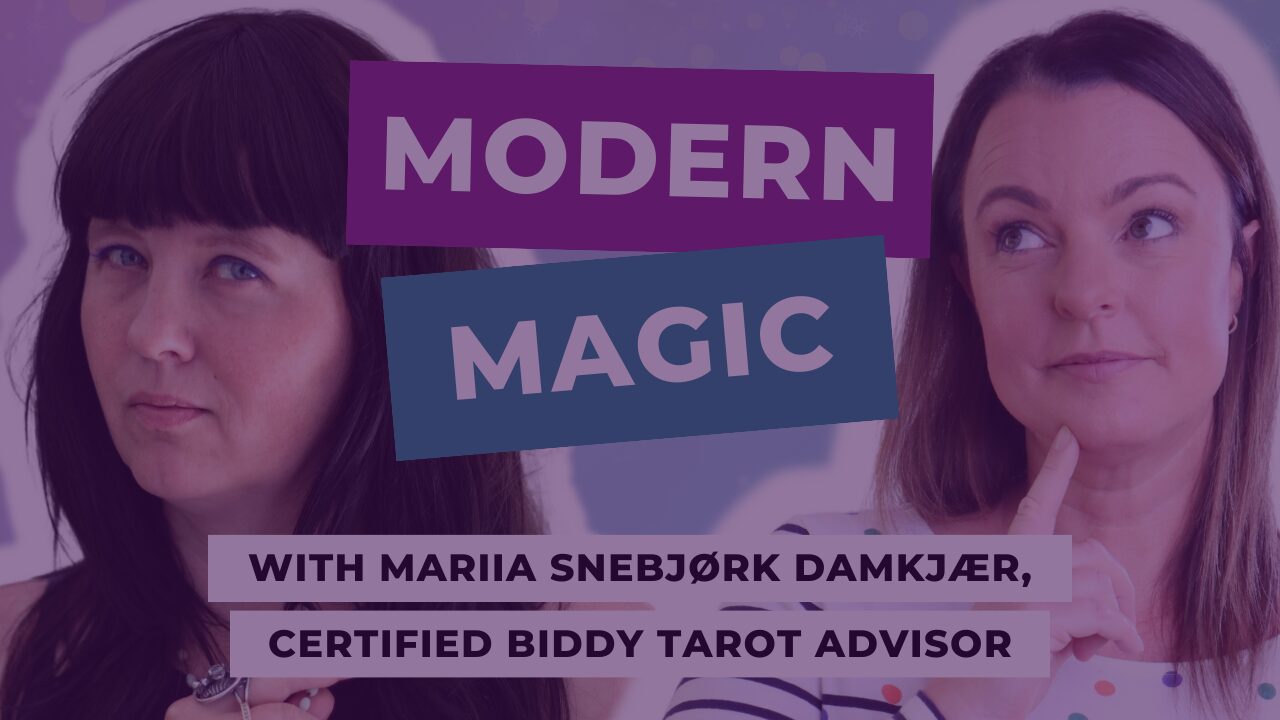
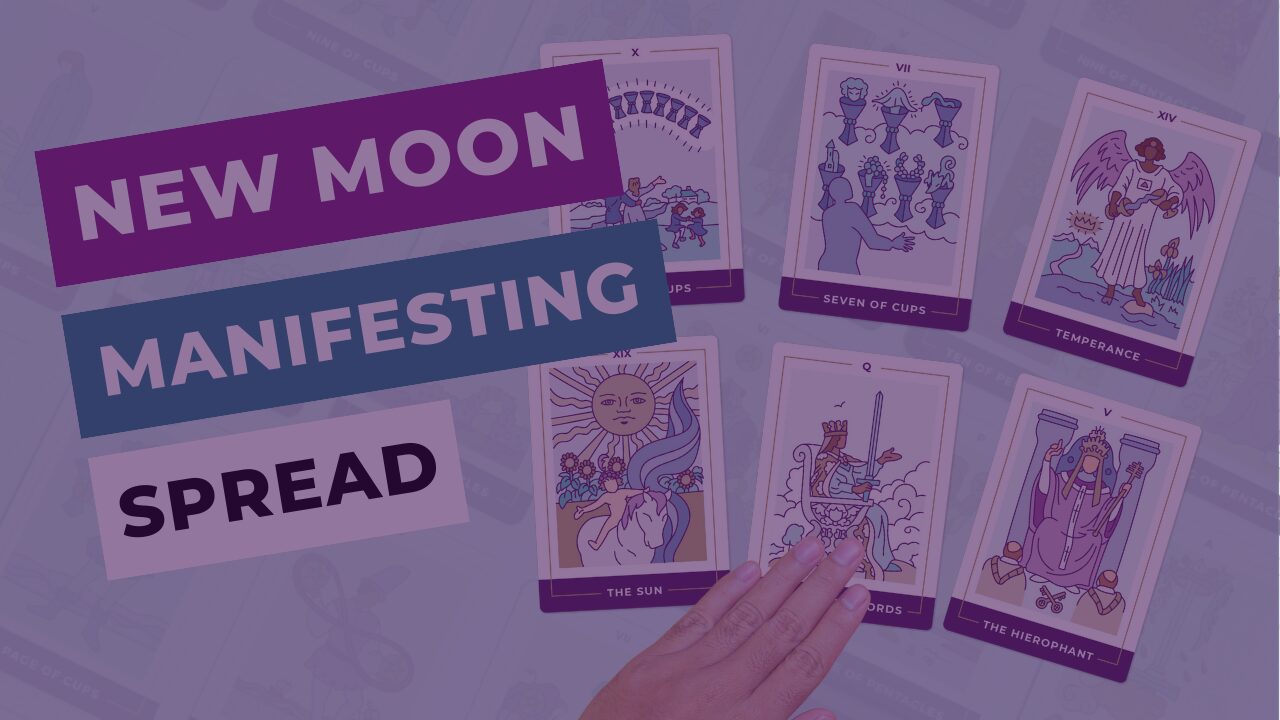

 Harness the wisdom of the Major Arcana with 22 guided meditations. Here’s what you’ll get:
Harness the wisdom of the Major Arcana with 22 guided meditations. Here’s what you’ll get: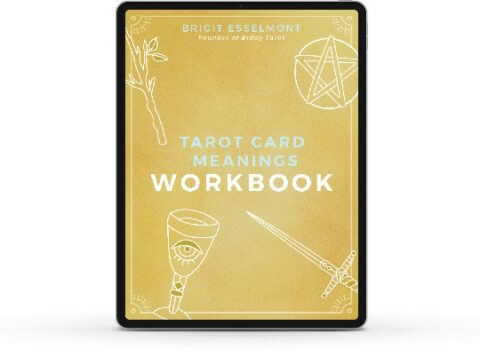 Create a deeply intuitive and personal connection to the Tarot cards with your very own Tarot Card Meanings Workbook. Here’s what you’ll find inside the workbook:
Create a deeply intuitive and personal connection to the Tarot cards with your very own Tarot Card Meanings Workbook. Here’s what you’ll find inside the workbook: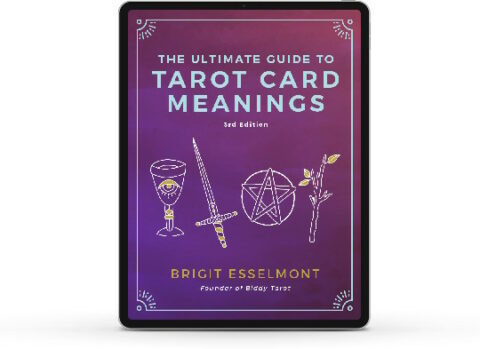 Here’s what you’ll find inside for every card in the deck:
Here’s what you’ll find inside for every card in the deck: Start doing deep, accurate readings TODAY with this step-by-step accelerated program for beginners.
Start doing deep, accurate readings TODAY with this step-by-step accelerated program for beginners.